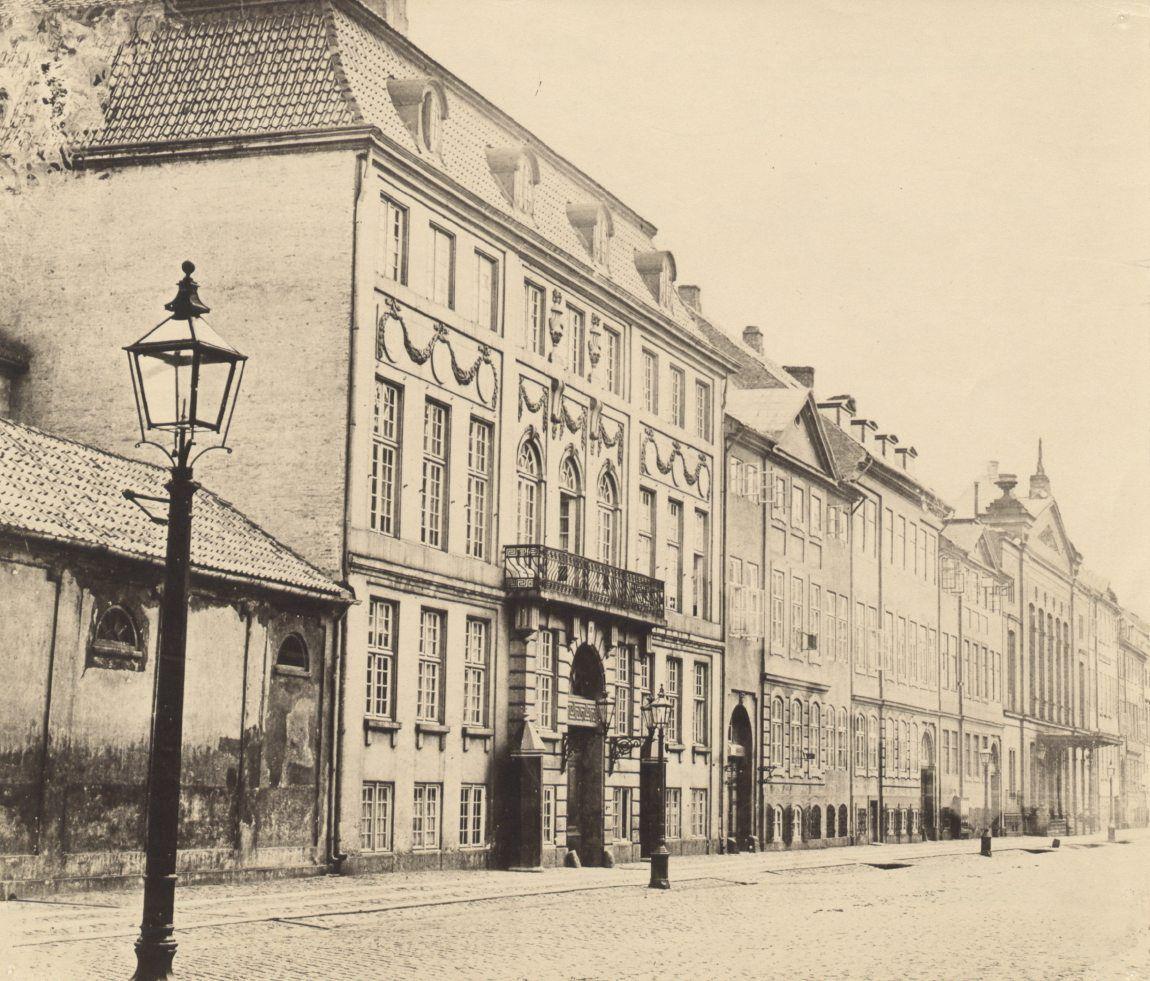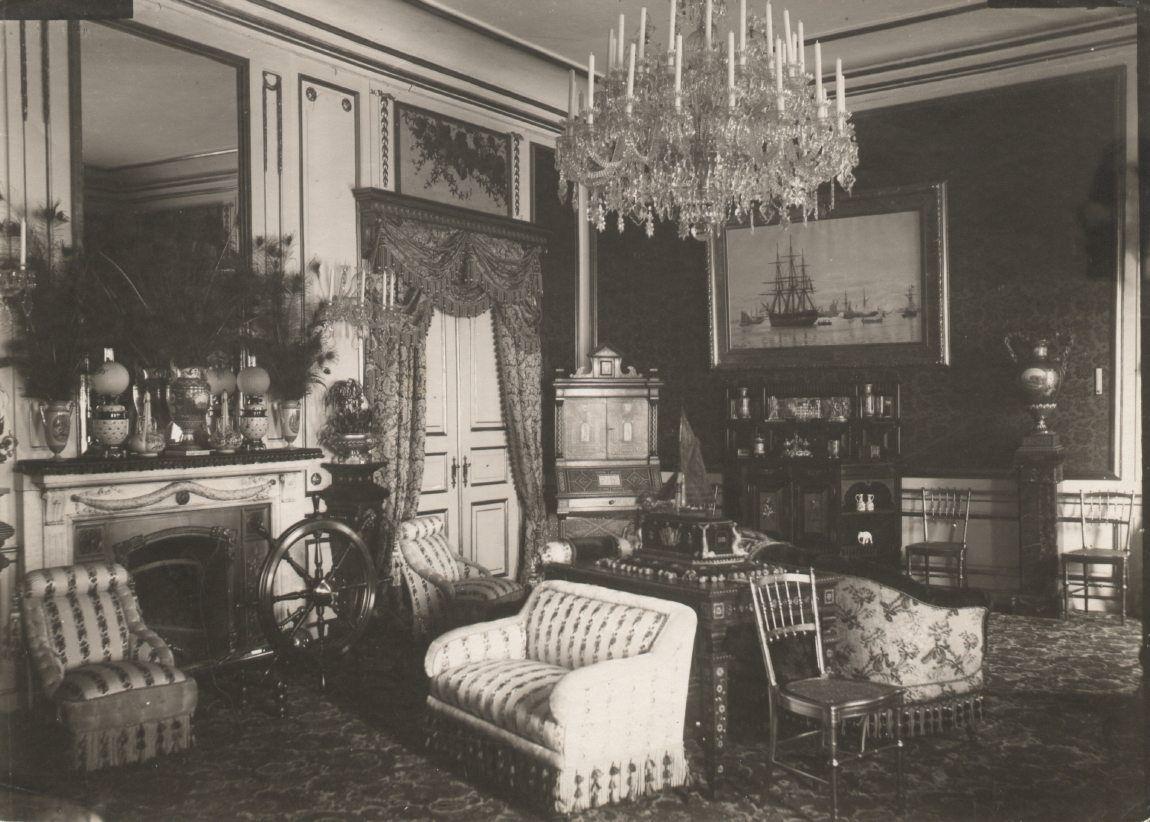Yellow Palace, Copenhagen on:
[Wikipedia]
[Google]
[Amazon]
The Yellow Palace ( da, Det Gule Palæ), or ''Bergum's Mansion'', is an 18th-century town mansion situated at
 Carl Friedrich Busky (1743-1808), a wealthy merchant and Prussian consul, acquired the mansion in 1775.
At the time of the 1787 census, No. 61 I was home to three households.
Carl Friderich Busky resided in the building with his wife Ana Sophia Gad, their five-year-old daughter Ana Maria Elisabet, a coachman, a male servant and two maids.
In the new cadastre of 1806, the property was listed as No. 123. Busky owned it until his death in 1808.
Carl Friedrich Busky (1743-1808), a wealthy merchant and Prussian consul, acquired the mansion in 1775.
At the time of the 1787 census, No. 61 I was home to three households.
Carl Friderich Busky resided in the building with his wife Ana Sophia Gad, their five-year-old daughter Ana Maria Elisabet, a coachman, a male servant and two maids.
In the new cadastre of 1806, the property was listed as No. 123. Busky owned it until his death in 1808.


 King Frederick VI purchased the mansion in 1810 to use it as a guest residence for relatives visiting the royal family. In 1837, King Frederick VI handed the property over to his wife's nephew Prince Christian of Schleswig-Holstein-Sonderburg-Glücksburg who had just arrived in Copenhagen from Germany. At this stage no one knew that he was later to become King
King Frederick VI purchased the mansion in 1810 to use it as a guest residence for relatives visiting the royal family. In 1837, King Frederick VI handed the property over to his wife's nephew Prince Christian of Schleswig-Holstein-Sonderburg-Glücksburg who had just arrived in Copenhagen from Germany. At this stage no one knew that he was later to become King
Source
{{Copenhagen historic houses Houses in Copenhagen Neoclassical architecture in Copenhagen Nicolas-Henri Jardin buildings Houses completed in 1764 1764 establishments in Denmark
Amaliegade
Amaliegade is a street in central Copenhagen, Denmark, which makes up the longer of the two axes on which the Rococo district Frederiksstaden is centred. Amaliegade extends from Sankt Annæ Plads to Esplanaden, passing through the central plaza ...
18, next to Amalienborg Palace
Amalienborg () is the official residence for the Danish royal family, and is located in Copenhagen, Denmark. Queen Magrethe ll lives here in winter and autumn. It consists of four identical classical palace façades with rococo interiors aroun ...
, in the Frederiksstaden
Frederiksstaden is a district in Copenhagen, Denmark. Constructed during the reign of Frederick V in the second half of the 18th century, it is considered to be one of the most important rococo complexes in Europe and was included in the 2006 Dan ...
district of Copenhagen
Copenhagen ( or .; da, København ) is the capital and most populous city of Denmark, with a proper population of around 815.000 in the last quarter of 2022; and some 1.370,000 in the urban area; and the wider Copenhagen metropolitan ar ...
, Denmark
)
, song = ( en, "King Christian stood by the lofty mast")
, song_type = National and royal anthem
, image_map = EU-Denmark.svg
, map_caption =
, subdivision_type = Sovereign state
, subdivision_name = Kingdom of Denmark
, establishe ...
. It is considered the first example of Neoclassical architecture
Neoclassical architecture is an architectural style produced by the Neoclassical movement that began in the mid-18th century in Italy and France. It became one of the most prominent architectural styles in the Western world. The prevailing sty ...
in Copenhagen.
Originally built as a burgher's home, the mansion was acquired by the Danish Royal Family
The Danish royal family is the dynastic family of the monarch. All members of the Danish royal family except Queen Margrethe II hold the title of ''Prince/Princess of Denmark''. Dynastic children of the monarch and of the heir apparent are a ...
. Prince Christian of Glücksborg, later to become Christian IX of Denmark
Christian IX (8 April 181829 January 1906) was List of Danish monarchs, King of Denmark from 1863 until his death in 1906. From 1863 to 1864, he was concurrently List of dukes of Schleswig, Duke of Schleswig, List of dukes of Holstein, Holstein ...
, took up residence there, and it became the birthplace of his children Frederick VIII of Denmark
Frederick VIII ( da, Christian Frederik Vilhelm Carl; 3 June 1843 – 14 May 1912) was King of Denmark from 29 January 1906 until his death in 1912.
The eldest son of King Christian IX, nicknamed the '' Father-in-law of Europe'', Freder ...
, Alexandra, Queen of the United Kingdom, George I of Greece
George I (Greek: Γεώργιος Α΄, ''Geórgios I''; 24 December 1845 – 18 March 1913) was King of Greece from 30 March 1863 until his assassination in 1913.
Originally a Danish prince, he was born in Copenhagen, and seemed destined for ...
and Maria Feodorovna, Empress of Russia.
Today the building is owned by the Danish Palaces and Properties Agency and houses the Lord Chamberlain's Office
The Lord Chamberlain's Office is a department within the British Royal Household. It is concerned with matters such as protocol, state visits, investitures, garden parties, royal weddings and funerals. For example, in April 2005 it organised th ...
.
History
18th century
WhenFrederiksstaden
Frederiksstaden is a district in Copenhagen, Denmark. Constructed during the reign of Frederick V in the second half of the 18th century, it is considered to be one of the most important rococo complexes in Europe and was included in the 2006 Dan ...
was laid around 1748, it was envisioned as a uniform Rococo district. All new buildings had to comply with certain guidelines stipulated by Nicolai Eigtved
Nicolai Eigtved, also known as Niels Eigtved (4 June 1701 – 7 June 1754) was a Danish architect. He introduced and was the leading proponent of the French rococo or late baroque style in Danish architecture during the 1730s–1740s. He desig ...
, the district's master planner. After Eigtved's death in 1754 they were in principle upheld but as fashions changed they were somewhat relaxed.
In the new cadastre
A cadastre or cadaster is a comprehensive recording of the real estate or real property's metes-and-bounds of a country.Jo Henssen, ''Basic Principles of the Main Cadastral Systems in the World,'/ref>
Often it is represented graphically in a cad ...
of 1756, the property was listed as No. 71 I. It was by then owned by Johan Jegind. On Christian Gedde's map of St. Ann's Quarter from 1757, it was marked as No. 316.
The Yellow Mansion was built from 1759 to 1764 for the merchant and slave trader Frederik Bargum. The architect was Nicolas-Henri Jardin
Nicolas-Henri Jardin (22 March 1720 – 31 August 1799) was a French architect. Born in St. Germain des Noyers, Seine-et-Marne, Jardin worked seventeen years in Denmark–Norway as an architect to the Danish royal court. He introduced neoclassici ...
and he designed it in the Neoclassical style
Neoclassical architecture is an architectural style produced by the Neoclassical movement that began in the mid-18th century in Italy and France. It became one of the most prominent architectural styles in the Western world. The prevailing style ...
.
Carl Friedrich Busky, 1775-1808
 Carl Friedrich Busky (1743-1808), a wealthy merchant and Prussian consul, acquired the mansion in 1775.
At the time of the 1787 census, No. 61 I was home to three households.
Carl Friderich Busky resided in the building with his wife Ana Sophia Gad, their five-year-old daughter Ana Maria Elisabet, a coachman, a male servant and two maids.
In the new cadastre of 1806, the property was listed as No. 123. Busky owned it until his death in 1808.
Carl Friedrich Busky (1743-1808), a wealthy merchant and Prussian consul, acquired the mansion in 1775.
At the time of the 1787 census, No. 61 I was home to three households.
Carl Friderich Busky resided in the building with his wife Ana Sophia Gad, their five-year-old daughter Ana Maria Elisabet, a coachman, a male servant and two maids.
In the new cadastre of 1806, the property was listed as No. 123. Busky owned it until his death in 1808.
Royal ownership


 King Frederick VI purchased the mansion in 1810 to use it as a guest residence for relatives visiting the royal family. In 1837, King Frederick VI handed the property over to his wife's nephew Prince Christian of Schleswig-Holstein-Sonderburg-Glücksburg who had just arrived in Copenhagen from Germany. At this stage no one knew that he was later to become King
King Frederick VI purchased the mansion in 1810 to use it as a guest residence for relatives visiting the royal family. In 1837, King Frederick VI handed the property over to his wife's nephew Prince Christian of Schleswig-Holstein-Sonderburg-Glücksburg who had just arrived in Copenhagen from Germany. At this stage no one knew that he was later to become King Christian IX
Christian IX (8 April 181829 January 1906) was King of Denmark from 1863 until his death in 1906. From 1863 to 1864, he was concurrently Duke of Schleswig, Holstein and Lauenburg.
A younger son of Frederick William, Duke of Schleswig-Holstein- ...
as the first Glücksburg
Glücksburg (; da, Lyksborg) is a small town northeast of Flensburg in the district Schleswig-Flensburg, in Schleswig-Holstein, Germany and is the northernmost town in Germany.
It is situated on the south side of the Flensborg Fjord, an inlet o ...
king of Denmark. Prince Christian took up residence in the mansion and lived there with his family until 1865 when he had become king and moved into Amalienborg Palace.
Later, his youngest son Prince Valdemar lived in the Yellow Palace with his family until his death in 1939 as its last royal resident.
Architecture
The building has been described as the first neoclassic building in Copenhagen. The site also includes ''Garderstalden'' (English: Guard's Stable), which was built in 1842 to designs byJørgen Hansen Koch
Jørgen Hansen Koch (4 September 1787 – 30 January 1860) was a Neoclassical Danish architect. He was chief of the national Danish building administration from 1835 and director of the Royal Danish Academy of Fine Arts from 1844 to 1849.
...
. It was used both for Christians af Glücksborgs 's horses and those of the horses of the Royal Guard
A royal guard is a group of military bodyguards, soldiers or armed retainers responsible for the protection of a royal person, such as the emperor or empress, king or queen, or prince or princess. They often are an elite unit of the regular arm ...
s who were on duty at the mansion. In 1923 the roof was converted into a Mansard roof with accommodation on the upper floor. The building was renovated and adapted by Bertelsen & Schewing in 2013. It contains administration in the ground floor and apartments on the upper floor.
See also
*Architecture of Denmark
Architecture is the art and technique of designing and building, as distinguished from the skills associated with construction. It is both the process and the product of sketching, conceiving, planning, designing, and constructing buildings o ...
References
External links
Source
{{Copenhagen historic houses Houses in Copenhagen Neoclassical architecture in Copenhagen Nicolas-Henri Jardin buildings Houses completed in 1764 1764 establishments in Denmark